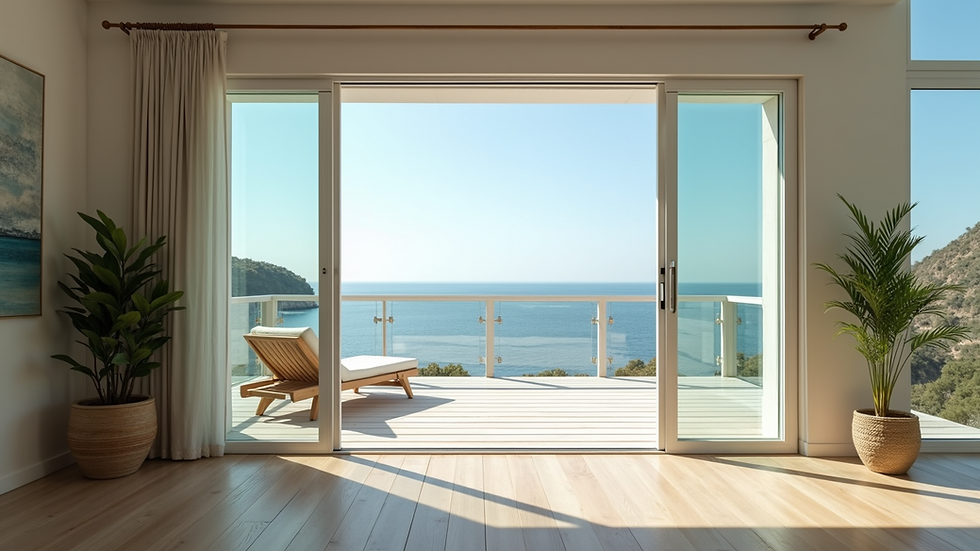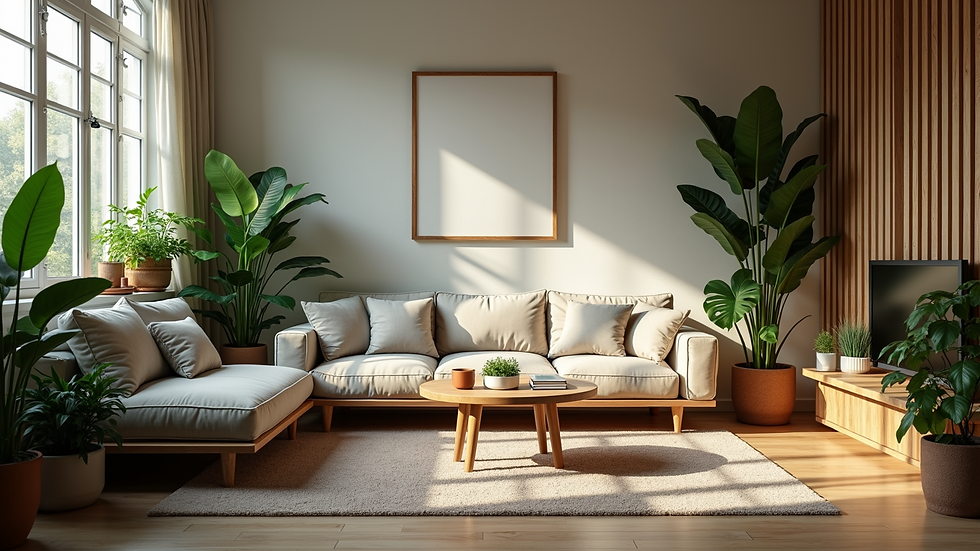How to Seamlessly Integrate Indoor Outdoor Flow in Coastal Homes Case Study
- hawkbuildingdesign
- Jul 25
- 3 min read
Living in a coastal home offers a unique blend of indoor comfort and outdoor beauty. However, tight coastal lots often present challenges in achieving a seamless indoor-outdoor flow. This case study highlights effective design strategies that can transform such spaces into harmonious environments, where the lines between inside and outside are beautifully blurred.
In this case study, you will find practical tips for enhancing flow in coastal homes, resulting in environments where nature seamlessly becomes part of daily living.
Embracing the Environment
Designing a coastal home begins with appreciating the surrounding environment. It's all about creating spaces with unobstructed views and easy access to outdoor areas.
For example, using large glass doors or sliding panels can effectively merge indoor living areas with outdoor patios or decks. These features allow for abundant natural light and foster a welcoming atmosphere. A study found that homes with such design elements can see a 20% increase in perceived space and comfort.
Choosing materials that resonate with the coastal landscape is also crucial. Natural stone floors or bamboo finishes indoors can extend the feeling of the external landscape inside. These materials not only enhance aesthetics but can also lower maintenance costs over time.

Defining Multi-functional Spaces
In coastal homes with limited space, every square meter counts. Thus, designing multi-functional areas is vital. Open-plan layouts promote a sense of flow and make the most of tight spaces.
Consider a case where a living room transitions smoothly into a dining area and an outdoor space. A large kitchen island serves as a conversation starter while cooking, effectively dividing yet connecting the spaces. Research indicates that open-plan designs can increase overall satisfaction with the living area by nearly 30%.
Furniture placement plays a key role in this design. Opting for movable furniture or outdoor-ready pieces that easily transition between indoor and outdoor settings. This flexibility allows homeowners to maintain a dynamic environment where space feels open and fluid.
Incorporating Nature
Integrating the natural landscape into your home design can greatly enhance indoor-outdoor flow. Bringing nature indoors through plants, stone feature walls, or small water features creates a tranquil atmosphere that reflects the beauty outside.
Additionally, large windows framing specific outdoor views can act as living art, allowing every glance to connect with nature. For instance, strategically placed windows can capture stunning sunset views over the ocean, fostering a sense of peace and tranquility in the home.

Utilizing Vertical Space
In coastal homes with limited square footage, maximizing vertical space is key. Tall windows, high ceilings, and smart shelving solutions can provide both storage and a stronger connection to the outdoors.
Consider adding vertical gardens or wall-mounted planters to introduce greenery without using up floor space. These elements can enhance air quality and provide vibrant backdrops that complement the coastal ambiance.
Using light-colored wood or soft textiles in furnishings can ensure the indoor space remains bright and airy, enhancing the overall feeling of spaciousness.
Creating Outdoor Rooms
Treating outdoor spaces as extensions of the home significantly improves indoor-outdoor flow. By designing "outdoor rooms" for specific purposes—like dining, lounging, or cooking—these areas can be as functional and inviting as those indoors.
Investing in comfortable outdoor furniture can help establish a cohesive aesthetic between the inside and outside. For instance, an outdoor kitchen complete with a built-in grill, countertop, and seating creates a social hub that draws family and friends into nature. Such setups can increase outdoor socializing by up to 25%.

Final Thoughts
Integrating indoor-outdoor flow in coastal homes can be an enjoyable endeavor, even on compact lots. Thoughtful design choices that blend spaces, embrace natural materials, and create multi-functional areas can effectively transform your living environment.
By incorporating views of the landscape, designing inviting outdoor rooms, and maximizing vertical space, you can elevate the aesthetic and functionality of your coastal home. These principles not only enhance the connection between indoors and outdoors but also contribute to a more peaceful and harmonious living experience.
If you seek more design tips and practical advice for your coastal home, consider subscribing to our email for the best tips. Stay updated on the latest trends and inspirations to make your seaside living beautifully unique!





Comments